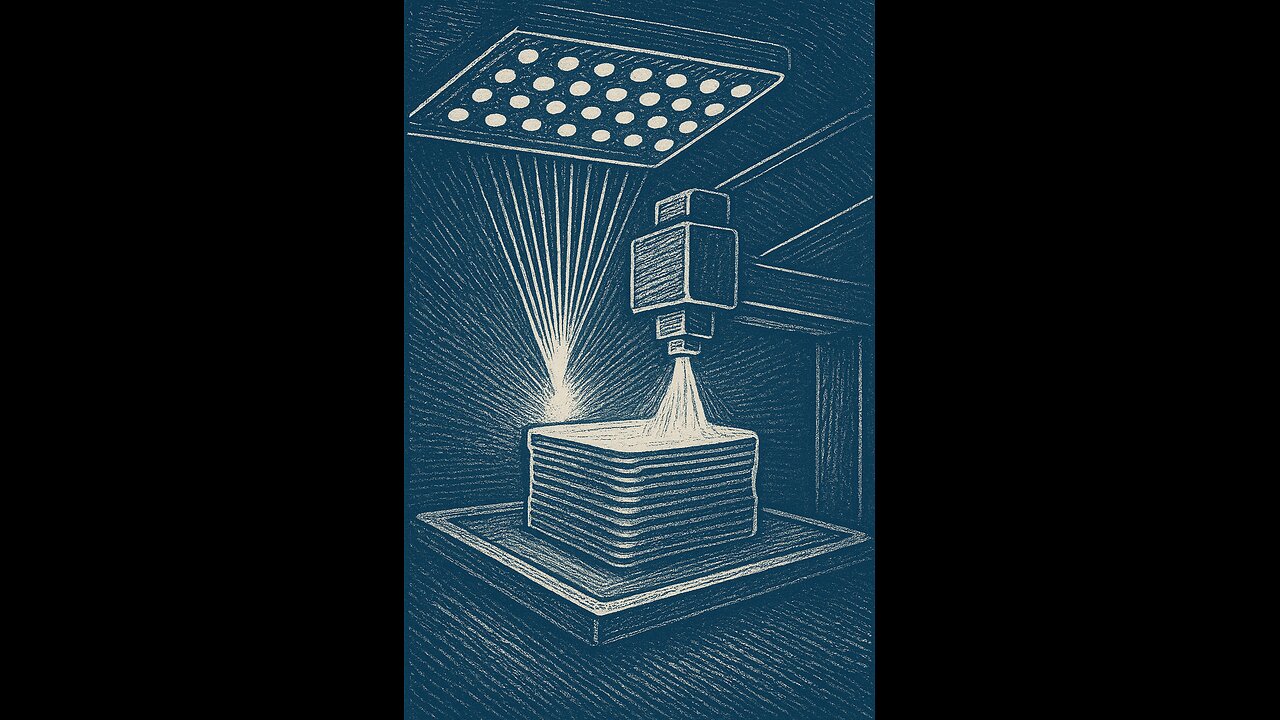Premium Only Content

UV Curing
Photosensitive resins and polymers used in UV curing rely on photoinitiators that absorb ultraviolet photons and undergo homolytic or heterolytic cleavage to generate reactive species, most commonly free radicals or cations, which then initiate polymerization.
In free-radical systems (e.g., acrylates), Type I photoinitiators like benzoin ethers or acylphosphine oxides fragment upon UV exposure to directly release radicals, while Type II initiators such as benzophenone abstract hydrogen from co-initiators like amines to form radicals; these species attack carbon–carbon double bonds in the resin’s monomers and propagate crosslinking.
In cationic systems (e.g., epoxides), diaryliodonium or triarylsulfonium salts release strong Lewis acids upon irradiation, producing cationic centers that trigger ring-opening polymerization.
The rapid buildup of covalent bonds between monomers transforms the liquid resin into a rigid, crosslinked solid, with polymerization depth and mechanical properties governed by initiator concentration, UV wavelength, and resin formulation.
-
 LIVE
LIVE
Man in America
10 hours ago“Poseidon” Doomsday Sub, Microplastics & The War on Testosterone w/ Kim Bright
3,577 watching -
 1:05:57
1:05:57
Sarah Westall
2 hours agoThe Story the DOJ, the FBI and the Media doesn’t want you to Know w/ Christina Bobb
918 -
 LIVE
LIVE
IsaiahLCarter
1 day agoGraham Linehan: A Mess of Courage and Conviction || APOSTATE RADIO 034
562 watching -
 LIVE
LIVE
Tundra Tactical
3 hours ago🛑LIVE NOW!! Honest Gun Company Slogans Gun Mad Libs and Much More
998 watching -
 LIVE
LIVE
MattMorseTV
4 hours ago $173.90 earned🔴Senate VOTES to END the SHUTDOWN.🔴
14,863 watching -
 LIVE
LIVE
Barry Cunningham
1 day agoBREAKING NEWS: DID PRESIDENT TRUMP MAKE A HUGE MISTAKE? SOME SUPPORTERS THINK SO!
1,865 watching -
 LIVE
LIVE
SpartakusLIVE
2 hours agoSOLOS on WZ || #1 Challenge MASTER is BACK in Verdansk
438 watching -
 LIVE
LIVE
megimu32
1 hour agoOFF THE SUBJECT: Chill Stream, Music & Fortnite Chaos 🎹🎮
115 watching -
 2:24:09
2:24:09
vivafrei
11 hours agoEp. 290: Canada's Darkest Week; Comey Fix is In! Tariffs, SNAP, Hush Money Win & MORE!
192K122 -
 LIVE
LIVE
EricJohnPizzaArtist
5 days agoAwesome Sauce PIZZA ART LIVE Ep. #68: DDayCobra Jeremy Prime!
177 watching